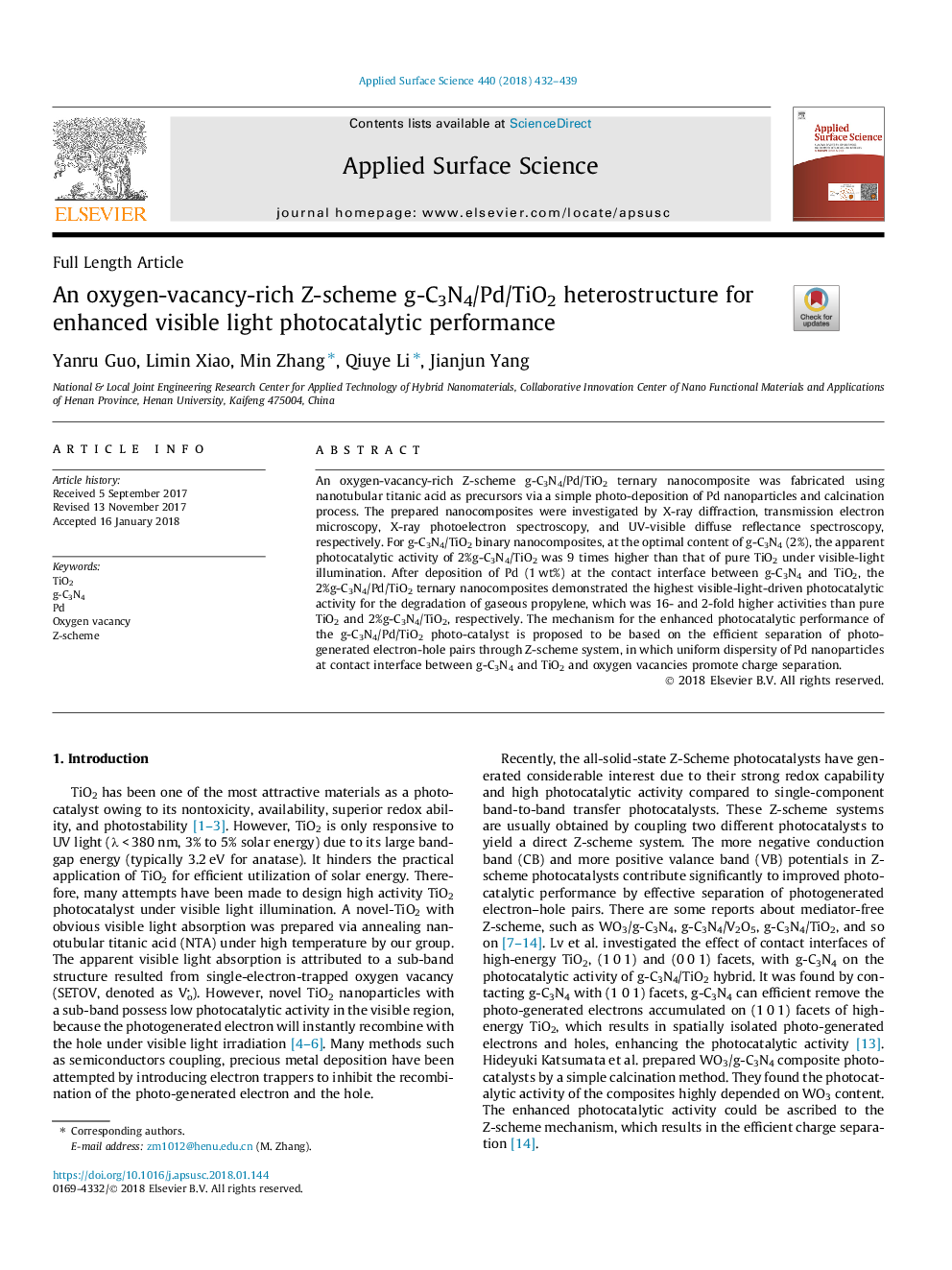| Article ID | Journal | Published Year | Pages | File Type |
|---|---|---|---|---|
| 7835297 | Applied Surface Science | 2018 | 8 Pages |
Abstract
An oxygen-vacancy-rich Z-scheme g-C3N4/Pd/TiO2 ternary nanocomposite was fabricated using nanotubular titanic acid as precursors via a simple photo-deposition of Pd nanoparticles and calcination process. The prepared nanocomposites were investigated by X-ray diffraction, transmission electron microscopy, X-ray photoelectron spectroscopy, and UV-visible diffuse reflectance spectroscopy, respectively. For g-C3N4/TiO2 binary nanocomposites, at the optimal content of g-C3N4 (2%), the apparent photocatalytic activity of 2%g-C3N4/TiO2 was 9 times higher than that of pure TiO2 under visible-light illumination. After deposition of Pd (1â¯wt%) at the contact interface between g-C3N4 and TiO2, the 2%g-C3N4/Pd/TiO2 ternary nanocomposites demonstrated the highest visible-light-driven photocatalytic activity for the degradation of gaseous propylene, which was 16- and 2-fold higher activities than pure TiO2 and 2%g-C3N4/TiO2, respectively. The mechanism for the enhanced photocatalytic performance of the g-C3N4/Pd/TiO2 photo-catalyst is proposed to be based on the efficient separation of photo-generated electron-hole pairs through Z-scheme system, in which uniform dispersity of Pd nanoparticles at contact interface between g-C3N4 and TiO2 and oxygen vacancies promote charge separation.
Keywords
Related Topics
Physical Sciences and Engineering
Chemistry
Physical and Theoretical Chemistry
Authors
Yanru Guo, Limin Xiao, Min Zhang, Qiuye Li, Jianjun Yang,
